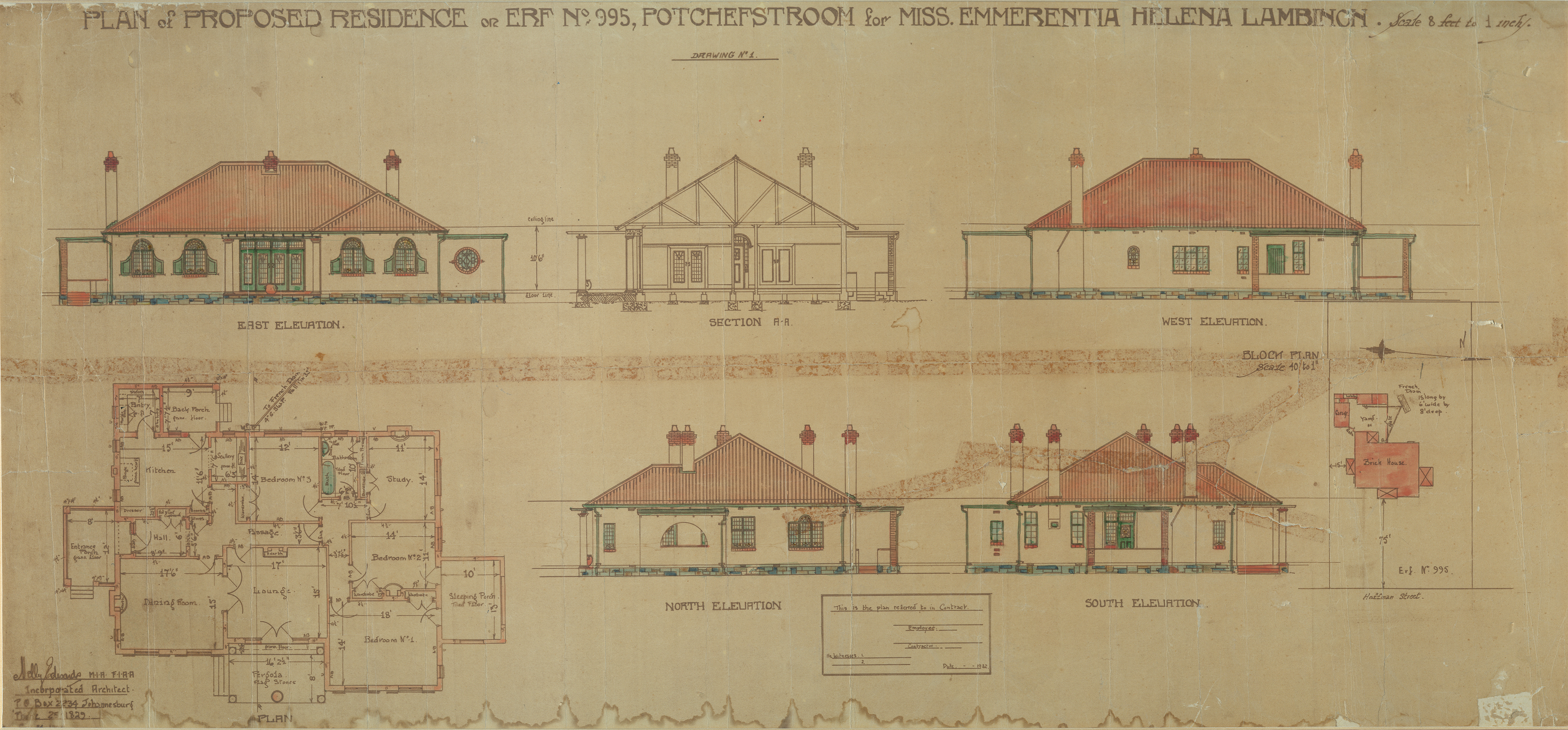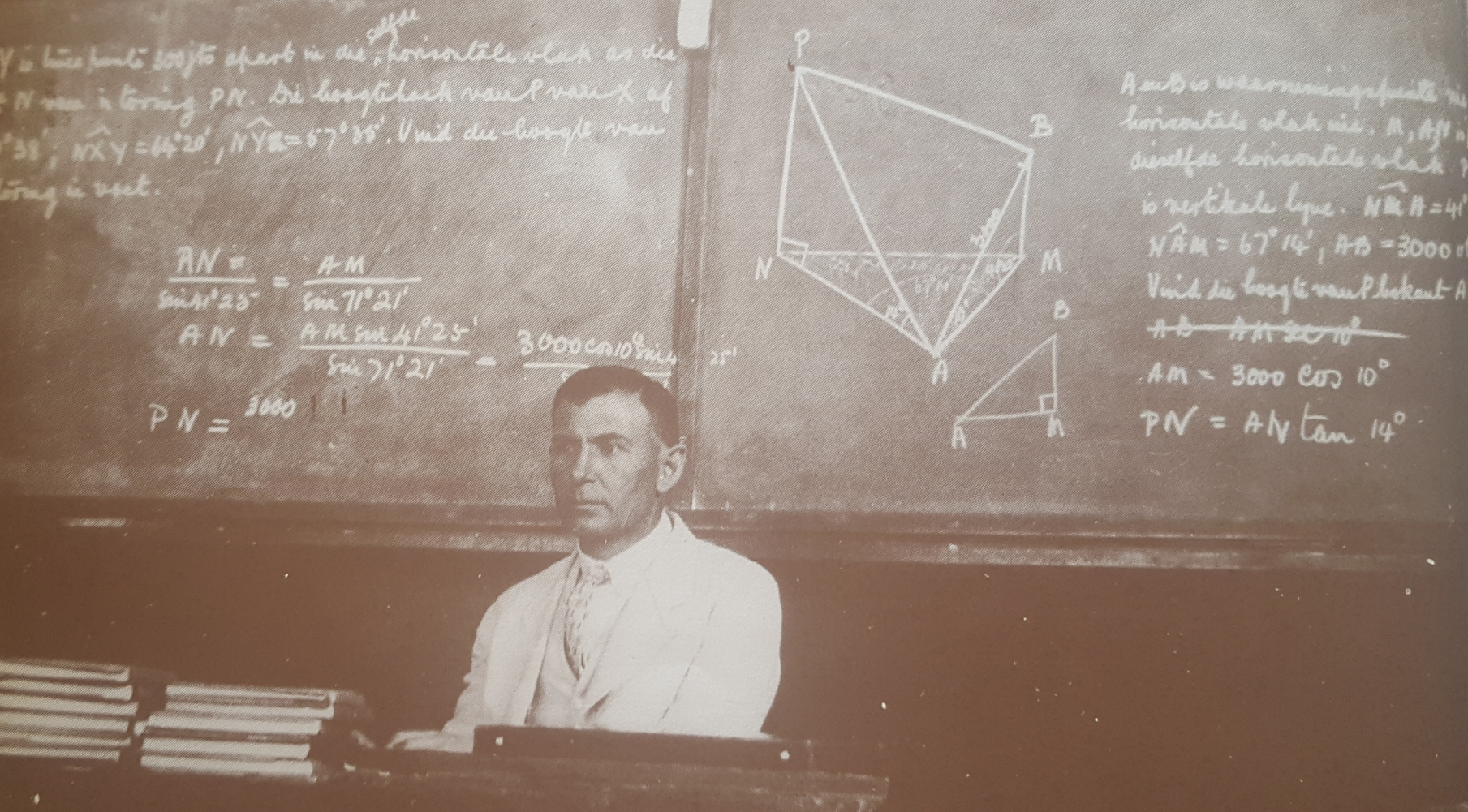Strydom House (C13)
- It was previously thought that the house that is now known as the Strydom House at 49 Hoffman Street (erf 995) was built by Mr PJ Strydom. The original plans of the house, which are held in the NWU Archives, indicate that the person who commissioned the plans, was Miss Emmarentia Helena Lambinon and that it was designed in 1932.
- PJ Strydom was a mathematics teacher and later vice-principal of the Potchefstroom Gimnasium and his family lived in the house for decades. He was associated with the school from 1924 to November 1953 when he retired. Afterwards he taught in a temporary capacity for many years.
- The house was designed by the Johannesburg architect, Nelly Edwards, in the Art Deco style.

Original plan of the artcitect
- There were no master builders in Potchefstroom and the tender was awarded to Hookem of Johannesburg.
- The Strydom family lived in the house until 1988 when Mrs Strydom moved out after the property was expropriated by Potchefstroom College of Education.
- The house was one of three in the area that were designed by Nelly Edwards. The house at 24 Esselen Street, also an Edwards design, was demolished by a developer in March 2008 under contentious circumstances without permission. The third house stood on the corner of Borcherds and Hoffman Streets where the Senrio Building is today.
- Nelly Edwards (1897 – ca1963) apparently was the first female architect in Johannesburg. She was born in England and received training there. By 1927 she was registered as an architect in South Africa. Apart from dwellings, she also designed two large blocks of flats, hostels for schools and churches.
- Her designs are characterised by a high standard of creativity. She was excellently attuned to the personality and needs of each client and gave specific attention to detail.
- In 1992 the Potchefstroom branch of the Foundation Simon van der Stel recommended that the house be placed on the National Register of buildings to be preserved.
- What makes the preservation of this house more important, is the fact that it is in all probability the only house in Potchefstroom still standing that was designed by Edwards.
- In a publication of the Foundation Simon van der Stel, the house is described as follows:
This tasteful dwelling illustrates the role of an architect in the design of a building, not only to comply with the requirements of the owner of client, but also to achieve a meaningful choice and union of available building and trimming materials. The house is important due to the fact that it documents the available materials of 1933: Prefab concrete columns in the Doric design on the veranda with a floor of clay tiles; wooden floors were used in the house, as well as pressed-steel ceilings with profiled wooden covering strips; display cabinets for china above the picture rails in the living rooms: Art Deco light fixtures, Art Deco fire place surrounds of “klompje” tiles. The light fixtures of the bedrooms have pulley systems for adjustable heights. A wide range of steel window frames were available as it appears from the half-moon windows, arched windows, round windows and a window with an arch over a third of the rectangular part. Art Nouveau leaded glass was used in windows and doors. Decorative wooden shutters and a stone arch in a doorway in the yard wall show the attention the architect gave to detail. Technologically interesting is the availability of waterproofing material that was available for flat roofs over a wooden construction for the southern veranda and needlework room. Outside walls were built with channelling to prevent dampness.

PJ Strydom in 1932
This photo of PJ Strydom was taken in 1932 and appeared in the book, Potchefstroom Gimnasium 1907-1982.
